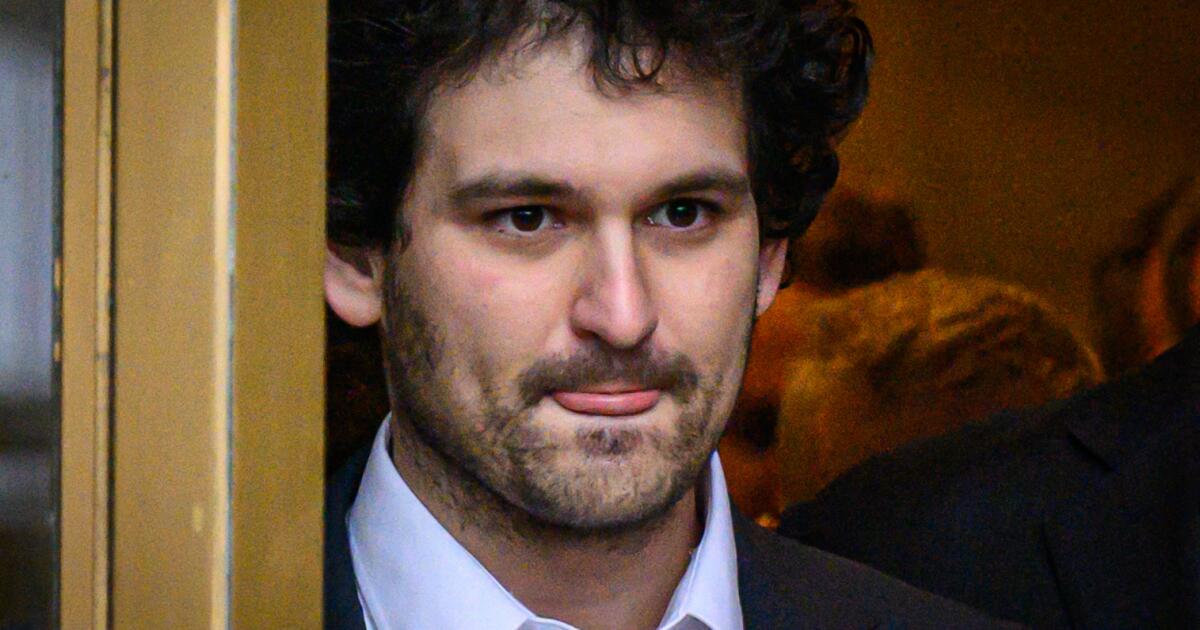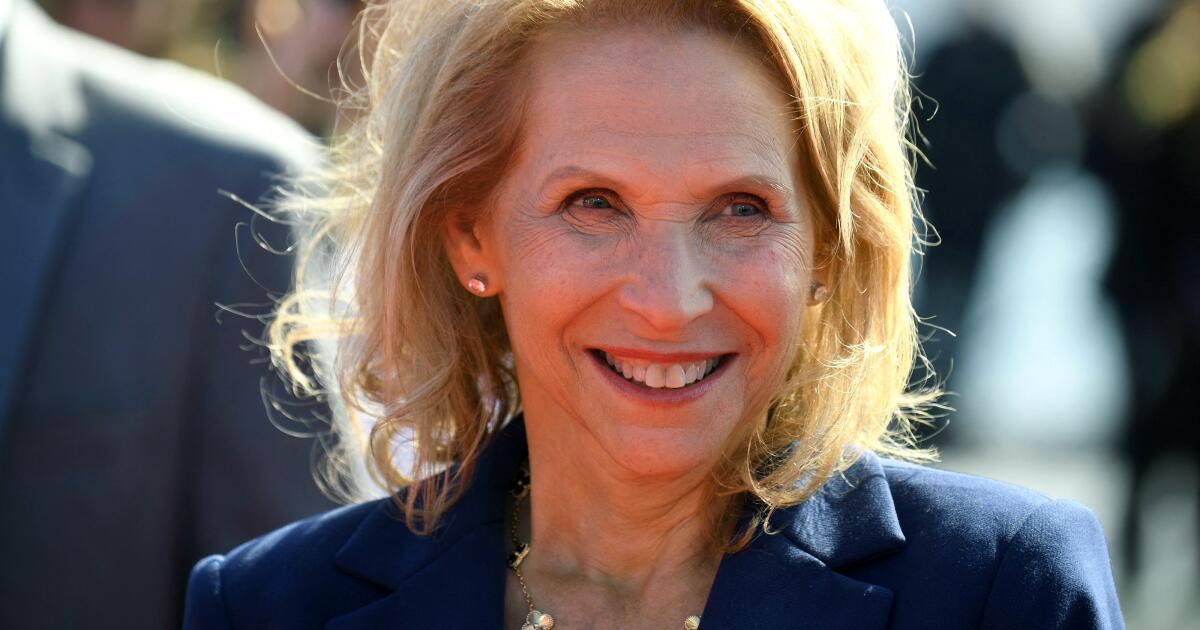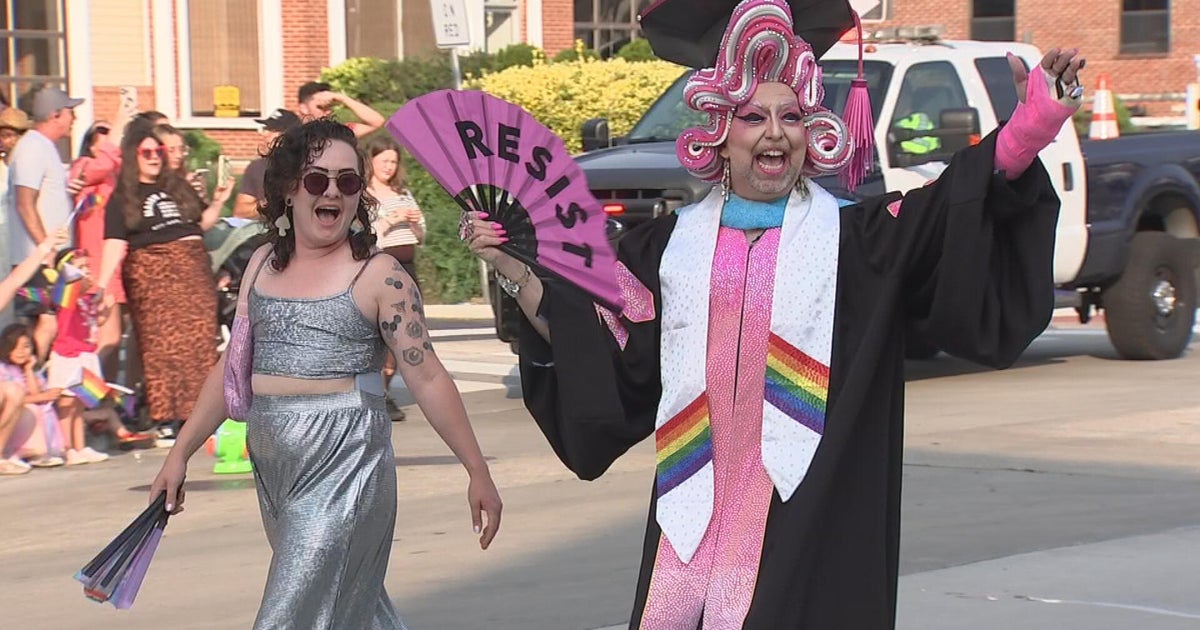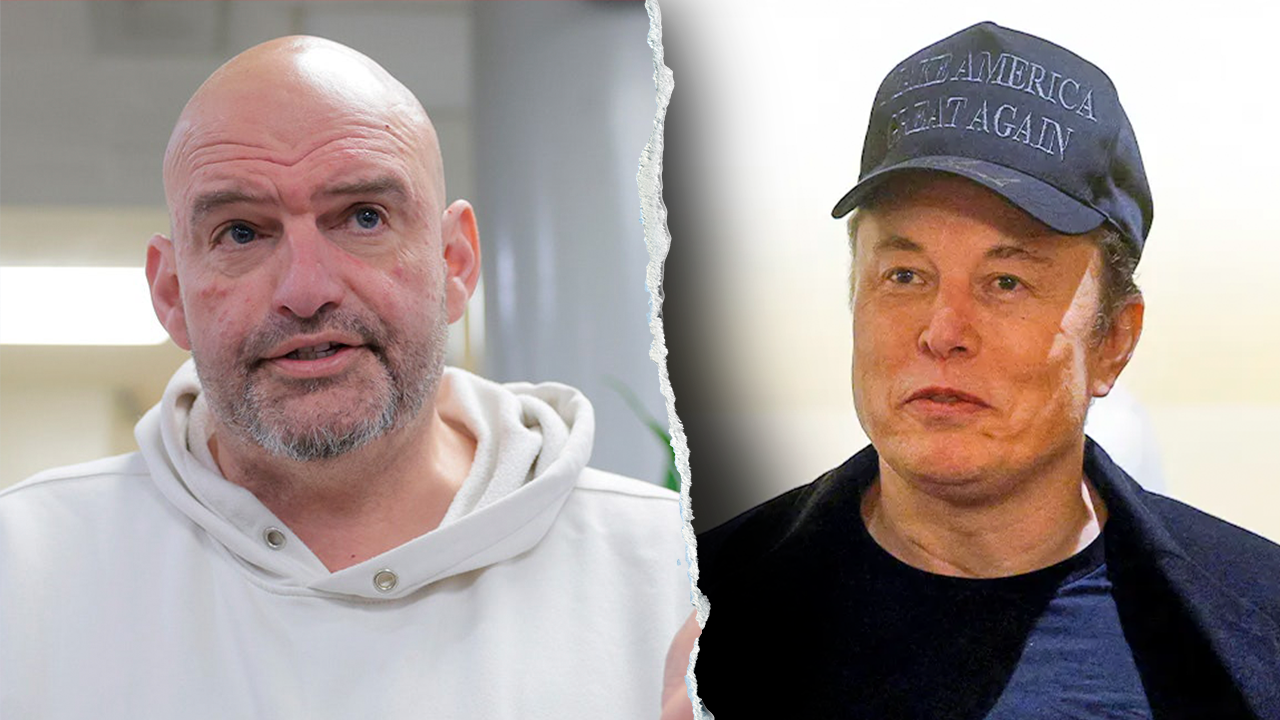Business
Column: Silicon Valley VCs wanted to believe SBF’s lies. Now they want you to believe their excuses.

Sequoia Capital wants you to know that it was “deliberately misled and lied to” by convicted cryptocurrency scam artist Sam Bankman-Fried during the discussions that led to its $213.5-million investment in Bankman-Fried’s firm, FTX, last year.
That’s an extraordinary admission, given that Sequoia is one of Silicon Valley’s oldest and largest venture investing firms, with an estimated $28.3 billion in assets under management. Yet that’s what Sequoia partner Alfred Lin, who was involved in advancing the FTX investment, asserted following Bankman-Fried’s conviction on seven fraud counts Thursday.
“Today’s swift and unanimous verdict confirms what we already knew,” Lin tweeted that day: “that SBF misled and deceived so many, from customers and employees to business partners and investors, including myself and Sequoia.”
It’s hard to understand how people who sell themselves as the most sophisticated financial investors in the United States could be so thoroughly fooled by a guy in cargo shorts.
— Dennis Kelleher, Better Markets
It may be tempting to think that the Bankman-Fried verdict put the FTX saga to rest. But that would be a mistake. For one thing, Bankman-Fried won’t be sentenced until March, and also may face yet another trial next year, on federal charges including bank fraud and bribery.
What’s more important is examining how Bankman-Fried managed to gull the nation’s ostensibly most sophisticated investors into bankrolling his firm — which, as testimony at his trial and discoveries by FTX’s post-bankruptcy chief executive have shown, was built on quicksand.
Sequoia was not alone. Public pension funds in Alaska, Washington State and Ontario, Canada, had direct or indirect investments in FTX. So did respected money managers and venture investment firms such as BlackRock, Tiger Global Management, Lightspeed and Softbank.
There’s scant evidence that any of them performed the due diligence — a focused inquiry into a prospective investment — that would have exposed the discrepancies between Bankman-Fried’s claims about his firm’s operations and the reality.
It’s not merely that these investors were snowed by Bankman-Fried’s unique variety of what the veteran and vigilant short-seller James Chanos calls “techno-gibberish”; it’s that something spurred them to plunge without looking. To some extent it may have been “FOMO,” or “fear of missing out.”
But it also reflected the torrent of capital that was flowing into the investment firms when interest rates were scraping bottom starting with the onset of the pandemic in March 2020. That condition lasted about two years.
“FTX is Exhibit A on how venture capital standards were eroded in a world of easy money,” says Dennis M. Kelleher, co-founder and CEO of Better Markets, a consumer and investor advocacy nonprofit. “The spigots opened and the VC guys were just handing out money with almost no due diligence, because money sitting uninvested is ‘bad’ so you have to get it out the door.”
The investors were seduced, he says, by the potential to generate massive profits from a business model based on what Kelleher says was tantamount to taking advantage of customers, which could last as long as no one looked too closely under the hood.
These investors may have thought they were protected by the notion that, in the venture world, 9 out of 10 investments go bust, but the 10th is such a big hit that it covers all the other losses. “That doesn’t mean that you shouldn’t do aggressive due diligence on all 10,” Kelleher told me.
Sequoia’s Lin tweeted Friday that “immediately after FTX collapsed, we extensively reviewed our due diligence process and evaluated our 18-month working relationship with SBF. We concluded that we had been deliberately misled and lied to.”
How much due diligence did Sequoia actually perform? In a letter to its investors on Nov. 9, 2022 — as FTX was beginning to crater — the firm asserted that it does “extensive research and thorough diligence on every investment we make,” and had conducted “a rigorous diligence process” before making its initial investment of $150 million. That same day, it said it was marking the value of its FTX holding to zero. Two days later, FTX declared bankruptcy.
Sequoia’s description of its due diligence doesn’t comport with a version reported in a slavishly adoring article about Bankman-Fried it had commissioned from a freelance writer and posted on its website.
According to that article, Sequoia’s interest in FTX originated in the summer of 2021, when FTX was raising money from investors for a funding round that ultimately brought in more than $420 million. Lin and another partner organized a “last-minute Zoom call” for others at Sequoia and Bankman-Fried at 4 p.m. on a Friday afternoon in July.
The partners were enthralled. “‘I LOVE THIS FOUNDER,’ one typed,” according to the article. “We were incredibly impressed,” one of the call organizers related. “It was one of those your-hair-is-blown-back type of meetings.” They were even more impressed, bizarrely, upon learning that during the call he was playing “League of Legends,” a video game.
It’s possible that Sequoia made further inquiries before investing; the funding round was not closed until Oct. 21.
But that only raises the issue of why Sequoia didn’t detect “the red flags flying in every direction” around FTX, Kelleher says — or detected and ignored them. “It’s hard to understand how people who sell themselves as the most sophisticated financial investors in the United States could be so thoroughly fooled by a guy in cargo shorts playing a game during an interview.”
It doesn’t appear that Sequoia or the other investors asked the fundamental questions about FTX that would have revealed its feet of clay.
“Sequoia could have said, ‘Can we talk to your risk officer?’ The answer would have been, ‘We don’t have one of those.’ They could have said, ‘Could we talk to your CFO [chief financial officer]’ The answer would have been, ‘We don’t have one of those.’ There are no difficult, deep questions here, just screamingly obvious questions that would have and should have set off alarm bells.”
According to a Silicon Valley adage, venture funding is “expensive money, but smart money” — venture firms demand outsized stakes in a startup in return for their investments, but make up for it by providing their connections and the wisdom born of their experience. (By contrast, public-markets investment is said to be “cheap money, but dumb money.”)
No evidence exists that Bankman-Fried sought the operational assistance of his venture investors. Instead, they seemed to have invested because they wanted to get in on the ground floor of the next big thing. Crypto was then still new enough that Bankman-Fried could convince investors that he had discovered the secret of how to profit from this novel asset class by giving the trading of it a veneer of old-school stability.
“FTX has aimed to combine the best practices of the traditional financial system with the best from the digital asset ecosystem,” he said in Congressional testimony in February 2022. He was in the driver’s seat all the way.
Not everyone was taken in. When Bankman-Fried came to Capitol Hill on May 11, 2022, to propose what he called a “safe and conservative” regulatory model that would foster “competition and innovation” in U.S. financial markets, existing futures exchanges pushed back.
Terrence A. Duffy, the CEO of CME Group, the world’s largest financial derivatives marketplace, warned a House committee that Bankman-Fried’s model was a lightweight regulatory regime that would “inject significant systemic risk into the U.S. financial system.” Lawmakers dismissed the concerns of his and other commodities executives as merely those of futures exchanges fearful of a new competitor.
But that wasn’t true of Kelleher, who sounded the alarm loud and clear as an independent financial watchdog. Bankman-Fried came to see Kelleher on May 3 with the goal of persuading Kelleher to support his proposal. Kelleher wasn’t buying, even though FTX offered his nonprofit a $1-million donation.
He informed Bankman-Fried that he saw his regulatory scheme as “a dramatic and radical proposal that eliminated customer, investor and financial protections that have worked for decades,” while legalizing glaring conflicts of interest that were not permitted in the securities and commodities markets, Kelleher told me. “If that’s your business model, you’re a financial predator. It’s just that simple.”
When Kelleher asked Bankman-Fried what would happen to protection for retail investment customers, Bankman-Fried claimed that he didn’t see retail investors as his target market — he was aiming for institutional investors.
Kelleher didn’t buy that either — not with FTX’s spending on a commercial during the 2022 Super Bowl, and on naming rights to the Miami Heat’s basketball arena, and on endorsements by Tom Brady and his then-wife, Giselle Bundchen, and to place its insignia on the uniforms of Major League Baseball umpires. Those deals were all manifestly designed to lure ordinary investors into the confusing and perilous crypto market.
The shame of the FTX saga, in Kelleher’s view, is that it illustrates how venture investors are content to obliterate hundreds of millions of dollars in capital, by investing it in a ripoff with tempting profits, crowding out “more durable, more valuable and more sustainably beneficial companies and ideas.”
Will this happen again? You bet it will. Was Sequoia really “deliberately misled and lied to” by Sam Bankman-Fried? Don’t make me laugh. Whatever Bankman-Fried’s intent may have been, Sequoia played in his sandbox willingly, drooling for perfidious profits every step of the way.

Business
Paramount chair Shari Redstone has been diagnosed with thyroid cancer

Paramount Global chairwoman and controlling shareholder Shari Redstone is battling cancer as she tries to steer the media company through a turbulent sales process.
“Shari Redstone was diagnosed with thyroid cancer earlier this spring,” her spokeswoman Molly Morse said late Thursday. “While it has been a challenging period, she is maintaining all professional and philanthropic activities throughout her treatment, which is ongoing.
“She and her family are grateful that her prognosis is excellent,” Morse said.
The news comes nearly 11 months after Redstone agreed to sell Paramount to David Ellison’s Skydance Media in a deal that would end the family’s tenure as major Hollywood moguls.
However, the government’s review of the Skydance sale hit a snag amid President Trump’s $20-billion lawsuit against Paramount subsidiary CBS over edits to an October “60 Minutes” broadcast.
Redstone, 71, told the New York Times that she underwent surgery last month after receiving the diagnosis about two months ago. Surgeons removed her thyroid gland but did not fully eradicate the cancer, which had spread to her vocal cords, the paper said.
She continues to be treated with radiation, the paper reported.
The Redstone family controls 77% of the voting shares of Paramount. Her father, the late Sumner Redstone, built the company into a juggernaut but it has seen its standing slip in recent years. There have been management missteps and pressures brought on by consumers’ shift to streaming. The trend has crimped revenue to companies that own cable channels, including Paramount.
Redstone has wanted to settle the lawsuit Trump filed in October, weeks after “60 Minutes” interviewed then-Vice President Kamala Harris. Trump accused CBS of deceptively editing the interview to make Harris look smarter and improve her election chances, a charge that CBS has denied.
The dispute over the edits has sparked unrest within the company, prompted high-level departures and triggered a Federal Communications Commission examination of alleged news distortion.
The FCC’s review of the Skydance deal has become bogged down. If the agency does not approve the transfer of CBS television station licenses to the Ellison family, the deal could collapse.
The two companies must complete the merger by early October. If not, Paramount will owe a $400-million breakup fee to Skydance. Redstone, through the family’s National Amusements Inc., also owes nearly $400 million to a Chicago banker and tech titan Larry Ellison, who is helping bankroll the buyout of Paramount and National Amusements.
Business
How Hard It Is to Make Trade Deals

President Trump has announced wave after wave of tariffs since taking office in January, part of a sweeping effort that he has argued would secure better trade terms with other countries. “It’s called negotiation,” he recently said.
In April, administration officials vowed to sign trade deals with as many as 90 countries in 90 days. The ambitious target came after Mr. Trump announced, and then rolled back a portion of, steep tariffs that in some cases meant import taxes cost more than the wholesale price of a good itself.
The 90-day goal, however, is a tenth of the time it usually takes to reach a trade deal, according to a New York Times analysis of major agreements with the United States currently in effect, raising questions about how realistic the administration’s target may be. It typically takes 917 days, or roughly two and a half years, for a trade deal to go from initial talks to the president’s desk for signature, the analysis shows.
Roughly 60 days into the current process, Mr. Trump has so far announced only one deal: a pact with Britain, which is not one of America’s biggest trading partners.
He has also suggested that negotiations with China have been rocky. “I like President XI of China, always have, and always will, but he is VERY TOUGH, AND EXTREMELY HARD TO MAKE A DEAL WITH!!!” Mr. Trump wrote on Truth Social on Wednesday. China and the United States agreed last month to temporarily slash tariffs on each other’s imports in a gesture of good will to continue talks.
Part of what the president can accomplish boils down to what you can call a deal.
The pact with Britain is less of a deal than it is a framework for talking about a deal, said Wendy Cutler, the vice president of the Asia Society Policy Institute and a former U.S. trade negotiator. What was officially released by the two nations more closely resembled talking points for “what you were going to negotiate versus the actual commitment,” she said.
During his first term, Mr. Trump secured two major trade agreements, both signed in January 2020. One was the United States-Mexico-Canada Agreement, which was a reworking of the North American free trade treaty from the 1990s that had helped transform the economies of the three nations.
U.S.M.C.A. is an all-encompassing, legally binding agreement that resulted from a lengthy and formal process, according to trade analysts.
Such deals are supposed to cover all aspects of trade between the respective nations and are negotiated under specific guidelines for congressional consultation. Closing the deal involves both negotiation and ratification — modifying or making laws in each partner country. The deals are signed by trade negotiators before the president signs the legislation that puts it into effect for the United States.
Mr. Trump’s other major agreement in his first term was with China, in an echo of the current trade war. The pact, unlike previous deals, came about after Mr. Trump threatened tariffs on certain Chinese imports. This “tariff first, talk later” approach, said Inu Manak, a trade policy fellow at the Council on Foreign Relations, is part of the same playbook the administration is currently using.
The result was a nonbinding agreement between the two countries, known as “Phase One,” that did not require approval from Congress and that could be ended by either party at any time. Still, it took almost one year and nine months to complete. China ultimately fell far short of the commitments it made to purchase American goods under the agreement.
A comparison of the two first-term Trump deals shows the drawn-out and sometimes winding paths each took to completion. Fragile truces (including ones made for 90 days) were formed, only for talks to break down later, all while rounds of tariffs injected uncertainty into the diplomatic relations between countries.
The Times analysis used the date from the start of negotiations to the date when the president signed to determine the length of deal making for each major agreement dating back to 1985 that’s currently in effect. The median time it took to get to the president’s signature was just over 900 days. (A separate analysis published in 2016 by the Peterson Institute for International Economics used the date of signature by country representatives as the completion moment and found that the median deal took more than 570 days.)
With roughly one month before the administration’s self-imposed deadline, Mr. Trump’s ability to forge deals has been thrust into sudden doubt. Last week, a U.S. trade court ruled he had overstepped his authority in imposing the April tariffs.
For now, the tariffs remain in place, following a temporary stay from a federal appeals court. But in arguing its case, the federal government initially said that the ruling could upset negotiations with other nations and undercut the president’s leverage.
In a statement on Wednesday, Kush Desai, a White House spokesman, said that trade negotiators were working to secure “custom-made trade deals at lightning speed that level the playing field for American industries and workers.”
But in other recent public statements, White House officials have significantly pared back their ambitions for the deals.
In April, Scott Bessent, the Treasury secretary, hedged the number of agreements they might reach, suggesting that the United States would talk to somewhere between 50 and 70 countries. Last month he said the United States was negotiating with 17 “very important trading relationships,” not including China.
“I think when the administration first started, they thought they could actually do these binding and enforceable deals within 90 days and then quickly realized that they bit off more than they could chew,” Ms. Cutler said.
The administration told its negotiating partners to submit offers of trade concessions they were willing to make by Wednesday, in an effort to strike trade deals in the coming weeks. The deadline was earlier reported by Reuters.
The current approach to deal making may be strategic, Ms. Manak said. One of the benefits of not doing a comprehensive deal like U.S.M.C.A. is that the administration can declare small “victories” on a much faster timeline, she said.
“It means that trade agreements simply are just not what they used to be,” she added. “And you can’t really guarantee that whatever the U.S. promises is actually going to be upheld in the long run.”
Data and graphics are based on a New York Times analysis of information from the Congressional Research Service, the U.S. Trade Representative, the Organization of American States’ Foreign Trade Information System and public White House communications.
Business
Terranea Resort accused of pregnancy discrimination, retaliation in lawsuit

A former marketing executive at the Terranea Resort sued the luxury establishment on Wednesday, alleging its president had made discriminatory comments towards pregnant women working at the company.
The former marketing exercutive, Chad Bustos, alleges in the lawsuit filed on Wednesday that he was fired in retaliation after he defended several female employees.
Terranea Resort and the company’s president did not respond to a request for comment about allegations in the lawsuit, which was filed in Los Angeles County Superior Court.
Bustos said he had worked at the 560-room oceanfront resort that perches on the Palos Verdes Peninsula since 2023. He had supervised an all-female marketing team, of which three employees were young moms with children under 3, according to the complaint.
The lawsuit describes a meeting in February 2024, where the resort’s president, Ralph Grippo, became “visibly angry” after hearing a woman on the team planned to take maternity leave. Her announcement had come months after another employee had returned from maternity leave.
Grippo, who also is a defendant in the lawsuit, allegedly stood up, pushed his chair back and began questioning the other women in the room. The lawsuit said Grippo pointed at each woman in turn, asking, “Are you pregnant?” After each woman answered, he sat back down and the meeting continued.
After the meeting, Grippo allegedly began “scrutinizing the marketing team and nitpicking their performance,” using the resort’s security cameras to see what time they arrived to work and when they left. He told Bustos to write up the women for what he deemed to be minor infractions, but Bustos refused, according to the complaint.
At another meeting in May 2024, Grippo scolded female employees for not working hard enough, although the team was high-performing and employees worked long hours, the lawsuit said.
Grippo was reported to the human resources department by one of the women, and Bustos confirmed her claims to the department, the lawsuit said. Bustos also confronted Grippo around that time, telling him his comments were inappropriate, according to the complaint.
After that, Grippo refused to speak with Bustos or return his calls, the lawsuit alleged, and in August 2024, Grippo fired Bustos.
Under California law, it is illegal for employers to ask employees about medical conditions, including pregnancy.
And anti-pregnancy comments can be used as evidence of sex discrimination, said Lauren Teukolsky, the attorney representing Bustos.
Bustos, who had worked with Grippo for 11 years at another company prior to joining him at the Terranea Resort, said in an interview that he initially thought Grippo would understand his perspective because of their long-standing relationship.
Bustos said his team was “very talented and hardworking,” and the sacrifices they and others have made to raise children “should be important for everybody.”
Grippo had had a history of making other anti-pregnancy comments, the lawsuit alleged.
When a woman asked Grippo for a promotion, he allegedly questioned her about how she planned to balance the promotion while raising a child. He asked another woman with two children who applied for a marketing job if her work schedule was going to be a problem since she was a mom, the lawsuit said.
Grippo wrote up another pregnant employee because she came in 15 minutes late as a result of morning sickness, and questioned another pregnant employee why she had so many doctor’s appointments, the lawsuit said.
In 2017, former dishwasher and chef assistant Sandra Pezqueda sued the resort and a staffing agency after she allegedly experienced repeated sexual harassment and assault by her supervisor, who then retaliated against her by changing her work schedule after she rejected his advances.
Pezqueda received a $250,000 settlement with the company denying any wrongdoing, news reports said.
Then-president Terri A. Haack said in a statement to Time that the company has “a zero-tolerance policy toward harassment.”
The Terranea resort is jointly owned by JC Resorts, a company with a portfolio of resorts and golf courses based in La Jolla, and Lowe Enterprises, real estate investment firm based in Los Angeles. The companies did not immediately respond to a request for comment.
-

 Culture1 week ago
Culture1 week agoCan You Match These Canadian Novels to Their Locations?
-

 Politics1 week ago
Politics1 week agoTrump admin asking federal agencies to cancel remaining Harvard contracts
-

 Technology1 week ago
Technology1 week agoThe Browser Company explains why it stopped developing Arc
-

 News1 week ago
News1 week agoHarvard's president speaks out against Trump. And, an analysis of DEI job losses
-

 News1 week ago
News1 week agoRead the Trump Administration Letter About Harvard Contracts
-

 News7 days ago
News7 days agoVideo: Faizan Zaki Wins Spelling Bee
-

 Politics5 days ago
Politics5 days agoMichelle Obama facing backlash over claim about women's reproductive health
-

 World1 week ago
World1 week agoDrone war, ground offensive continue despite new Russia-Ukraine peace push















